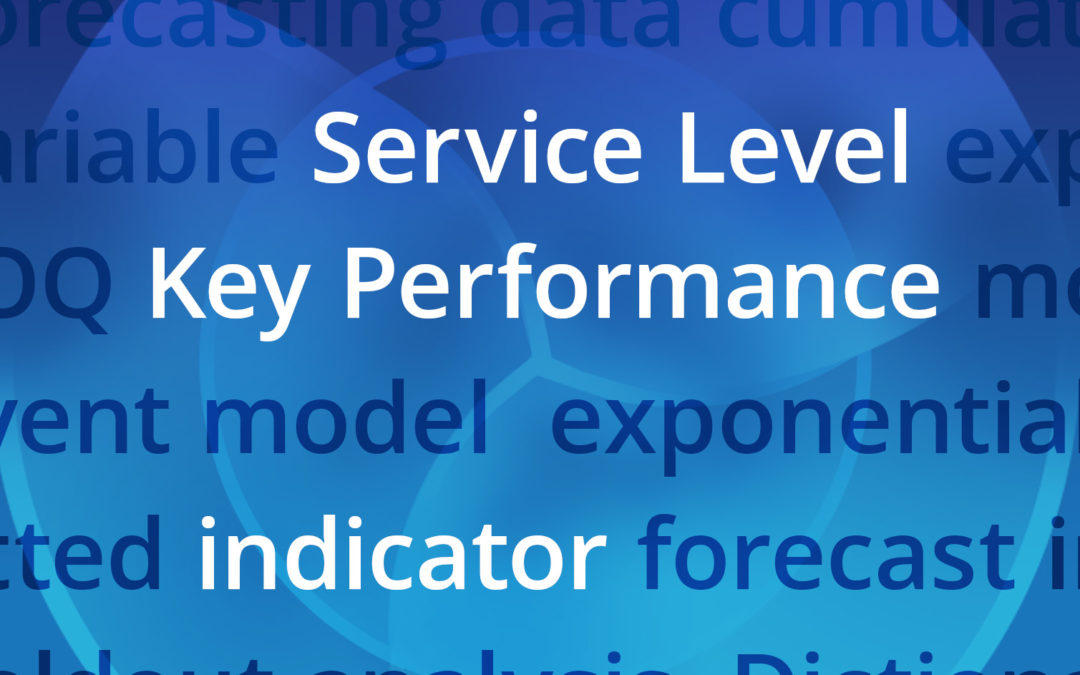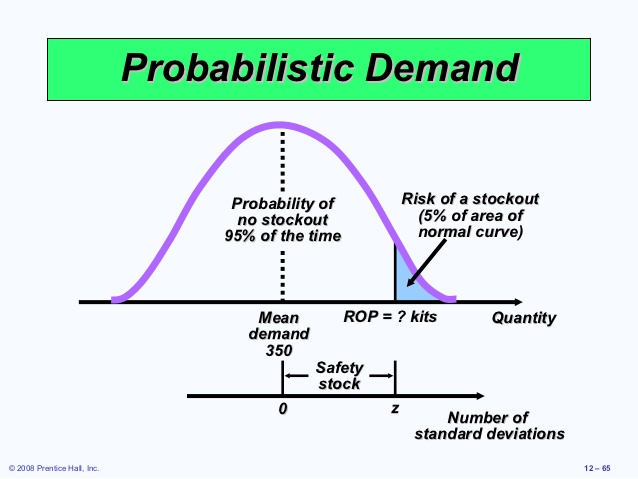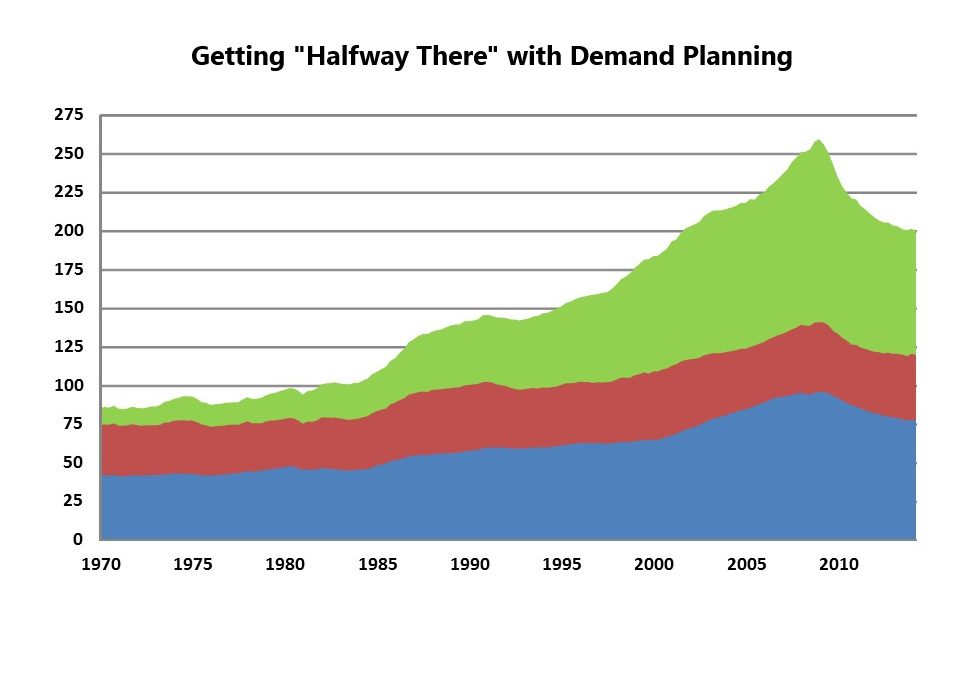Supply chain management involves planning and implementation. Demand planning, based on a statistical projection, evaluates inventory, marketing, and demand-influencing factors and defines where to distribute products to fulfill the anticipated demand. Usually kicks off the planning side of SCM.
To increase the precision of the demand forecasts utilized in the supply chain, companies invest a lot of time and money in forecasting activities. The objectives of a precise demand plan and a lean supply chain process may be hampered by a bad process design.
Learn industry best practices on how to improve demand planning and create supply chain efficiencies.

Undershoot is Sabotaging your Service Level!
Undershoot means that the lead time begins not at the reorder point but below it. Undershoot happens every time the demand that breached the reorder point took the stock down below (not down to) the reorder point. Undershoot picks your pocket before you even begin to roll the dice. It deludes the inventory professional into thinking his or her reorder points are sufficient to achieve their targets, whereas actual performance will not make the grade.

The Advantages of Probability Forecasting
Most demand forecasts are partial or incomplete: They provide only one single number: the most likely value of future demand. This is called a point forecast. Usually, the point forecast estimates the average value of future demand. Much more useful is a forecast of full probability distribution of demand at any future time. This is more commonly referred to as probability forecasting and is much more useful.

Service Level vs Fill Rate
Service level and fill rate are two important metrics for measuring how effectively customer demand is satisfied. These terms are often confused and understanding the differences can help improve your inventory planning process. This video blog (Vlog) helps illustrate the difference with a simple example using Excel

How to Choose a Target Service Level
When setting a target service level, make sure to take into account factors like current service levels, replenishment lead times, cost constraints, the pain inflicted by shortages on you and your customers, and your competitive position.

Getting “Halfway There” with Demand Planning
Demand planning takes time and effort. It’s worth the effort to the extent that it actually helps you make what you need when you need it. But the job can be done well or poorly. We see many manufacturers who stop at the first level when they could easily go to the second level. And with a little more effort, they could go all the way to the third level, utilizing probabilistic modeling to convert demand planning results into an inventory optimization process.

3 Types of Supply Chain Analytics
The three types of supply chain analytics are “descriptive”, “predictive”, and “prescriptive.” Each plays a different role in helping you manage your inventory. Modern supply chain software lets you exploit all three helping you to reduce inventory costs, improve on time delivery and service levels, while running a more efficient supply chain.
Problem
An accurate forecast is a critical supply chain driver, but many organizations have a limited view of what comes next. Forecasts developed by sales teams or customers are often inaccurate and biased toward sales goals or budgets. Forecasts are often provided only at aggregate levels leaving unspecified which items will be at which locations. Planning teams are left to interpret sales figures and convert them into actionable forecasts of the item mix. Incorporating sales feedback, determining which decades old forecast model to use, managing the consensus forecast process, and tracking forecast accuracy are manual processes. They are often managed in complex spreadsheets that are difficult to use, share and scale, and don’t account important features of demand such as seasonality and trend.
Solution
Register to Watch the Demo

Accurate Demand Forecasts
Capture trend and seasonality
Predict range of future demand
Flag exceptions
Cleanse historical data

Operational Consensus
Collaborate with key stakeholders
Review at any level of hierarchy
Apply overrides and achieve consensus

Consistent Repeatable Process
Common system
No spreadsheets
Embed and reuse forecast rules
Monitor accuracy and fine-tune
Who is Smart Demand Planner for?
- Demand Planners.
- Forecast Analysts.
- Material & Inventory Planners.
- Operational Research Professionals.
- Sales Analysts.
- Statistcally Minded Executives.
What questions can Smart Demand Planner answer?
- What is my short and long term demand most likely to be?
- Which areas of the business and products are trending?
- What is the forecast at different levels of my hierarchy (customer, item, family)?
- What is the likely range of future demand?
- Which forecasts need to be reviewed (exception reporting)?
- What is our forecast error (accuracy) for each item, group, overall?
- Are forecast overrides adding value to the process?
What can Smart Demand Planner do?
-
Accurately forecast demand for thousands of items in any unit of measure, powered by the SmartForecasts® engine.
- Capture trends, seasonal, and cyclical patterns at any level.
- Outlier detection and correction to enhance the quality of historical data.
- Identifies “causal” factors such as price and economic data and models their impact on demand.
- Patented Intermittent Demand Planning via APICS award winning “Bootstrapping” technology.
- Create forecasts at any level of the hierarchy – customer, item, product groups, regions.
- Share forecasts with internal and external stakeholders such as sales and suppliers.
- Apply, document, and track forecast overrides.
- Quantify the impact that promotions will have on future demand.
- Apply user defined forecasting methods and rules.









